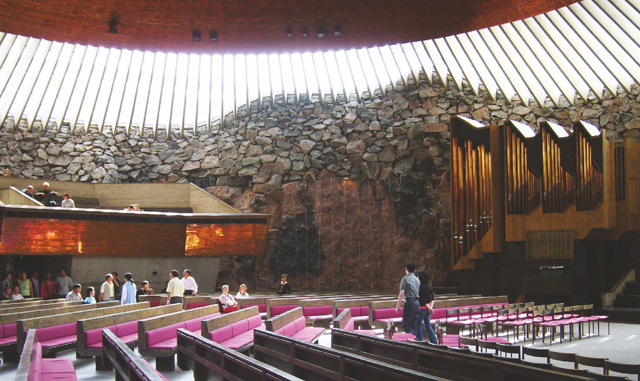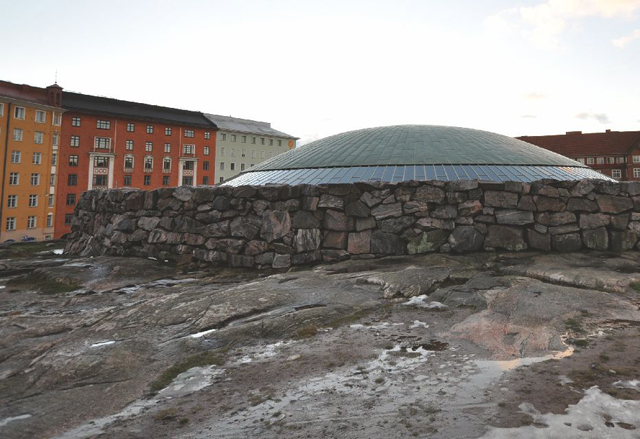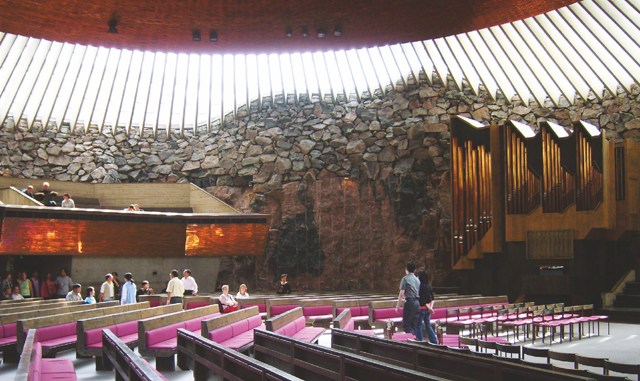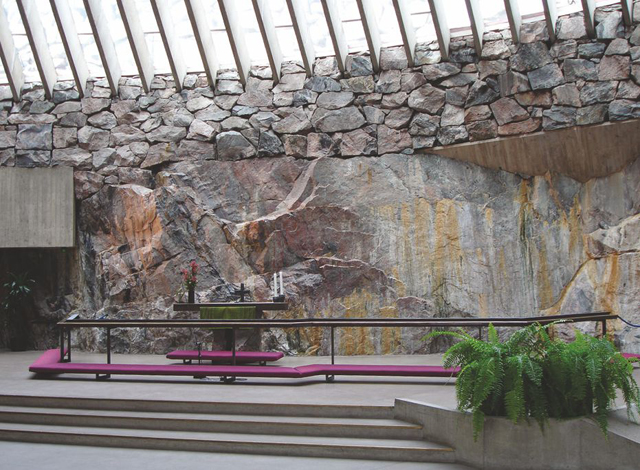THE ROCK CHURCH TEMPPELIAUKIO

There are buildings that make their mark in the history of architecture and find their way into encyclopaedias. One such building is the Temppeliaukio Church in the Töölö district of Helsinki in Finland. It was a long way from the first conception to the realisation of the building.
The plot for the church was first included in the zoning plan as early as 1906. At the beginning of the 1930s the project was launched. The city announced several architectural competitions, but the submitted designs did not meet the expectations of the competition jury. It was not until 1936 that more interesting designs were presented, but then further work was halted by the outbreak of World War II. The idea to build a church was revived in 1960 when brothers Timo and Tuomo Suomalainen put forward a winning design.

When the result of the competition was announced, the Suomalainen brothers’ design was received quite positively by the public. However, the early 1960s was a period when anti-clericalism and left-wing politics were common in Finland. The press, which demonstrated such views, criticized and obstructed the project. After many years of struggle to obtain the required permits the construction finally started in 1968.

The area where the church was to stand was rocky and the architects decided to preserve the natural character of the site. The result is a building whose main part is constructed below the ground and is carved into a granite rock. The interior of the church is an oval surrounded by rough rock walls. The building is topped with a copper dome. From the outside the only visible part of the building is the dome rising from granite blocks.

The church was consecrated in 1969. Visitors soon grew to love it and it has become one of the most important architectural objects in Helsinki. As the acoustics of the church are excellent, it often serves as a concert hall.
The Temppeliaukio Church has been featured in more than 200 architectural magazines around the world. As the only building in Finland, it was listed in the Italian book series “I Cento Monumenti”, which presents the most important monuments in the world.
Source: Kurier kamieniarski
Author: Kurier Kamieniarski | Published: 07.03.2017
